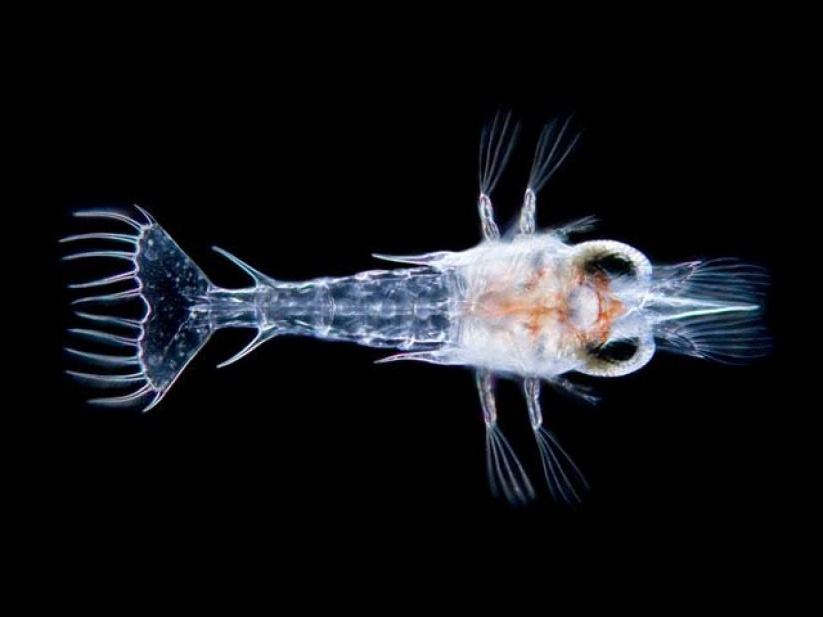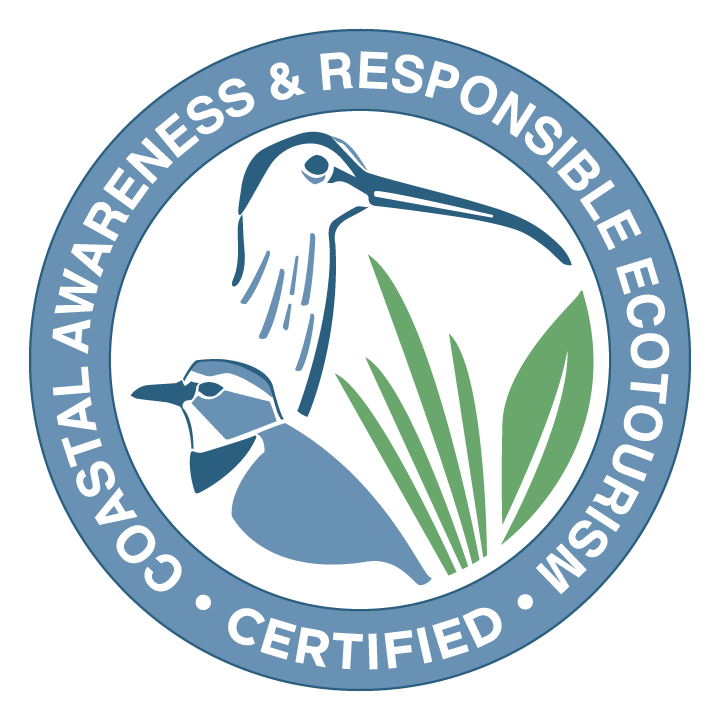Crustaceans
Introduction
Crustaceans are a group of invertebrates that have a hard outer shell, segmented bodies and jointed appendages. They are generally aquatic, with crabs and lobsters being the most well-known. Crustaceans make up one of the most diverse and abundant plankton groups, so it is important to understand what organisms are in this group and how to identify them.
Copepods

Copepods are highly abundant and one of the most common organisms in samples, they live commonly in many parts of the world’s ocean. They live their whole lives has plankton (holoplankton) and have many life stages, so it is important to be aware of their key features key features.
Their long antennae are a key characteristic, and they use them for many things. They can help slow down sinking and sense water vibrations indicating predators or prey. They can also tuck these in when they swim to help them move faster (Johnson & Allen, 2005).
Copepods usually reproduce sexually, with a male grasping on to a female and transferring sperm. They begin as eggs and have many life stages, called nauplius and copepodite stages, then become adults. For them, reproduction and egg hatching are determined by their environment e.g. what nutrients are available, what temperature it is. Their average life span is 6 months to a year.
They have a distinct swimming style; they shoot forward in bursts with pauses in-between (see below).
video of copepod swimming.
They have a rounded body with two antennae that usually stick out at a right angle from the body. These can be tucked in, making them into a heart shape. Some can carry egg sacks which can look like another appendage.
True Shrimp Larvae

True shrimp are small, swimming crustaceans that belong to the order Decapoda (same as crabs!). As adults they have special swimming legs, called swimmerets (Thomas, 2024), and are nektonic, but early life stages have not developed these legs yet and are planktonic.
Female shrimp can release up to 1 million eggs, these are tiny and other zooplankton are known to feed on them! These eggs drift for around 24h, the ones that were lucky enough to not get eaten then hatch into the nauplius larvae (New Georgia Encyclopedia). Shrimp are an important food source for other zooplankton, marine organisms and us! In Georgia shrimp make up 80% of the value from all seafood.
Shrimp can be identified by their long antennae and their eyes on stalks. The body is slim and dark, and you may be able to see the legs depending on what way the shrimp is facing. They also have a fanned-out tail.
Amphipods

Amphipods can be split up into ‘Amphi‘ meaning different kinds and ‘pods‘ meaning legs. These crustaceans have different kinds of appendages, and some may even have pinchers. They look very similar to shrimp but are different as they lack a hard outer shell (carapace) and are flattened from side to side (laterally) (Johnson & Allen, 2005).
Most amphipods live on the ocean floor, in the benthic zone, but a few groups of these guys can be plankton and show up in our samples! Amphipods are an important food source with many kinds of fish eating them.
They can be identified by their large head, which is needed as they have large eyes. The rest of their body is thin, with short legs and a pair of long appendages at the front. These are the key characteristics, but amphipods are very variable and can appear different across samples!
Flash card practice
References
Answers. (n.d.). What does amphi- mean? Retrieved March 26, 2025, from https://www.answers.com/amphibians/What_does_amphi-_mean
Bing. (n.d.). Copepod banner. Retrieved March 26, 2025, from https://www.bing.com/images/search?q=copepod+banner&FORM=HDRSC3
iStock. (n.d.). Copepod [Photograph]. Retrieved May 16, 2025, from https://media.istockphoto.com/id/1441350218/photo/copepod.jpg?s=612×612&w=0&k=20&c=EwEqhO7Yf6SzDcYVAZIoKAt3LAWs3KEE8ECdblqjXAQ
Johnson, W. S., & Allen, D. M. (2005). Zooplankton of the Atlantic and Gulf coasts: A guide to their identification and ecology. Johns Hopkins University Press. http://archive.org/details/zooplanktonofatl0000unse
Johnson, W. S., & Allen, D. M. (2012). Zooplankton of the Atlantic and Gulf Coasts (2nd ed.). Johns Hopkins University Press.
Macon Newsroom. (2021, June). Amphipod (similar to new species) [Photograph]. https://macon-newsroom.com/wp-content/uploads/2021/06/Amphipod-thats-similar-to-new-species-900×664.jpg
New Georgia Encyclopedia. (n.d.). Shrimp. Retrieved March 26, 2025, from https://www.georgiaencyclopedia.org/articles/business-economy/shrimp/
Thomas. (2024, July 1). How do shrimp swim? A look at their unique swimming abilities. The Kitchen Know-How. https://thekitchenknowhow.com/how-does-a-shrimp-swim/
Unknown author. (n.d.). [Photograph of marine organism]. Pinterest. Retrieved May 16, 2025, from https://i.pinimg.com/originals/14/bc/d2/14bcd2aff037e9d5915a740bcdd65072.jpg
